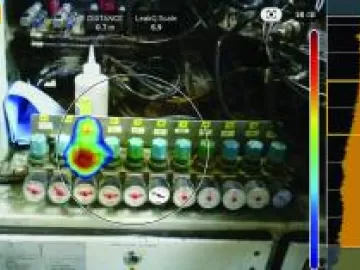Air Compressor Control Gap Issues Solved at an Ethanol Plant
A newly constructed ethanol plant experienced control gap issues shortly after comissioning. This article discusses the cause of the issue and how the problem was solved.

As part of its ongoing corporate initiative to find ways to reduce its energy bills, and the costly impact on the bottom line, a cleaning products plant, located southwest of Chicago, recently focused on improving their compressed air system operation. This company is a global leader in water, hygiene and infection prevention solutions and services. This article discussed their efforts to improve the operation of their compressed air system by implementing an innovative compressed air monitoring and control system.
A newly constructed ethanol plant experienced control gap issues shortly after comissioning. This article discusses the cause of the issue and how the problem was solved.
Facility managers, how would you like the peace of mind from knowing the system you had installed or modified is thoroughly tested - to the same degree as a new production line? How would you like to be confident that the money you spent is still paying back benefits, year after year?
“Retro-Commissioning” (ReCX) of compressed air systems has become a trendy activity with many utility demand-side-management programs emerging in the last 5-10 years. This is intended to be the process of “tuning up” a compressed air system, getting low cost savings from mostly adjustments and repairs. The term was borrowed from the building/HVAC industry, where it means to get a system operating as it was originally “commissioned”.
UniFirst is one of North America’s largest workwear and textile service companies. They outfit nearly two million workers in clean uniforms and protective clothing each workday. Founded in an eight-stall garage in 1936, the Company has grown to 240 customer servicing locations throughout the U.S. and Canada servicing 300,000 business customer locations. The subject of this article is an energy-saving Air Demand Analysis (ADA), conducted by Kaeser Compressors, at UniFirst’s centralized 320,000 square foot hub Distribution Center located in Owensboro, Kentucky.
MHPSC Canada is a large facility specializing in machining and manufacturing large pieces for power generation (gas turbines, large hydro, wind) and deep sea oil and gas operations. Smaller machining and manufacturing are also done in the facility, as well as welding and piping fabrication. MHPSC purchased flow meters for two systems, the Large and Small Machine Shops, to measure the total compressed air production. Since the two systems have piping that is physically close together, it was felt that there was an opportunity to tie the two systems together to save energy. The readings showed that the compressed air demand was indeed low enough in the two systems to enable a 100 hp VFD compressor to feed the combined systems.
Compressed air optimization measures adopted by PTMSB have reduced the consumption of compressed air by 31 percent resulting in savings of about 3,761,000 kWh per year in energy consumption. The monetary savings are MYR 1,090,627 per year (\$255,000 USD). The CO2 reduction is estimated at 2,735 ton per year.
The objective of this project is to help the building automation industry develop novel products that more cost-effectively identify faults (unwanted conditions) and inefficiencies in the operation of the compressed air plants of industrial facilities. More cost-effective fault detection and diagnostics (FDD) products can come to the building automation marketplace only after that industry makes very significant advances in the state-of-the-art of its FDD software tools from what it currently offers. Those advances require making common practice of rules-based artificial intelligence (AI) methods that the building automation industry has shown little to no familiarity with in its technology so far. This project will utilize, under controlled conditions, the compressed air plant of the NIST campus as a facility for test and development of an embedded rules-based FDD tool based upon NIST expertise.
In aerospace manufacturing, tiny details matter most. For instance, if proper torque is not applied to the screws and bolts fastening an aircraft fuselage, catastrophic failures can result. Compressed air is used to power the tools needed to apply that torque, making the compressed air system a critical part of the facility, though it largely stays behind the scene.
When a successful Midwestern United States-based packaging company reached out to Cleveland, Ohio-based Diversified Air Systems, Inc. (Diversified), it was simply looking to fulfill its need for backup air. Compressed air is a vital component of the packaging company’s business, used for a variety of purposes, such as in its corrugating machines, conveyors, actuators, and more. In the end, the company received much more than just air redundancy, including a new variable speed drive, two-stage air compressor, a completely reconfigured and upgraded piping system, improved system efficiencies, energy savings, and a significant energy rebate.
A Canadian fiberglass plant has completed a lengthy compressed air improvement journey and achieved significant efficiency gains by applying “the systems approach.” Along the way, the company ran across many frustrating problems, the solutions to which were only determined after the entire system was monitored holistically using data loggers. The overall compressed air audit led to a reduction in energy usage of 48 percent, yielding savings worth \$17,500 per year. The project also qualified for a large utility incentive of \$32,000 with a calculated payback of 4.4 years.